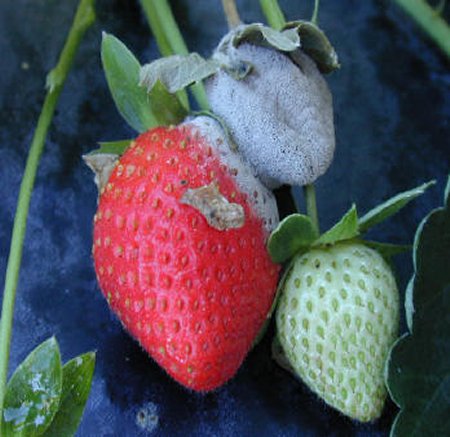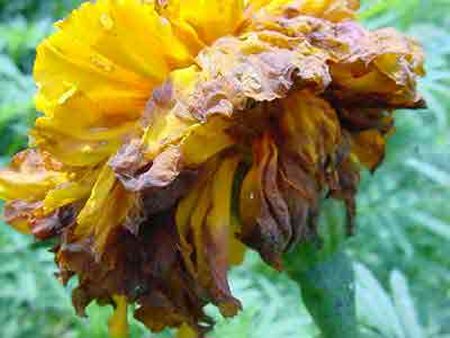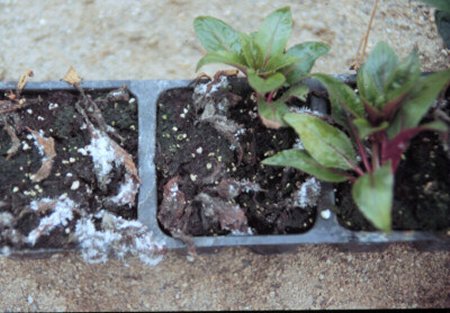
2005 Year in Review
Back to Page two: Other Listing | Back to Year in Review Index
Gray Mold in the Garden |
|
Source: James Schuster (708) 352-0109; Contact: Bob Sampson, Extension Communications Specialist, Phone (217) 244-0225; rsampson@uiuc.edu Hundreds, perhaps even thousands, of plants are susceptible to attack by gray mold (also known as Botrytis), said a University of Illinois Extension horticulture educator. "Gray mold can kill flower parts, leaves, buds, shoots, seedlings, and fruits," said James Schuster. "Herbaceous plants and woody plants can be attacked. The disease is not host specific. "The disease needs moisture as one of its criteria for infection. The wetter, it is the more gray mold shows up on plants. Not only are the numbers of infected areas increased but so are the number of plants attacked as well as the severity of the infections." Schuster noted that gray mold is sometimes confused with old age and thrip damage. To help determine whether browning on petals is caused by old age or gray mold, check the petals closely. "Browning from old age should occur on the outer petals first and along the edges and at the tip of the petals," he said. "When inner petals or the middle of the petals develop brown lesions first, gray mold is probably the reason. On leaves that are relatively thin such as redbud, lesions are light brown to brown and irregular. On fleshier leaves such as rhododendrons, concentric rings with different shades of brown may be visible." Symptoms of gray mold may vary depending on plants attacked, plant parts attacked, and growing conditions. Under moist, humid conditions, a grayish thin mass of webbing may be visible. Rapidly rising or lowering humidity will trigger the release of spores. Poor air circulation adds to the survival and growth of the disease. "When temperatures are between 68 and 76 degrees and the humidity is high, it takes about 20 hours for the disease to infect," said Schuster. "Warm to hot dry weather tends to reduce or stop the growth and spread of the disease." Gray mold can over winter on infected dead plant material as well as on live plant material. "Sanitation is the main control," said Schuster. "Sanitation is not perfect since the disease can blow in from a long distance. Deadhead dying flowers and remove all infected plant tissue. Infected plant material should be buried to help control the spread of the disease. Dig a hole at least a foot deep. Cover the infected plant material with at least a foot of soil." Since gray mold often attacks flower petals, fungicides are seldom suggested, Schuster said. by Editor, theCity1.com |
|
Copyright © 2005 TheCity1.com.
All rights reserved


